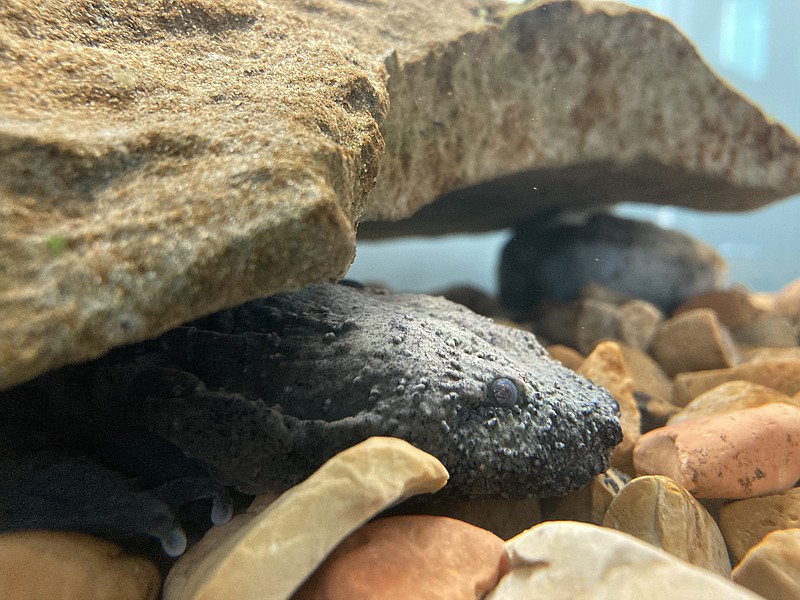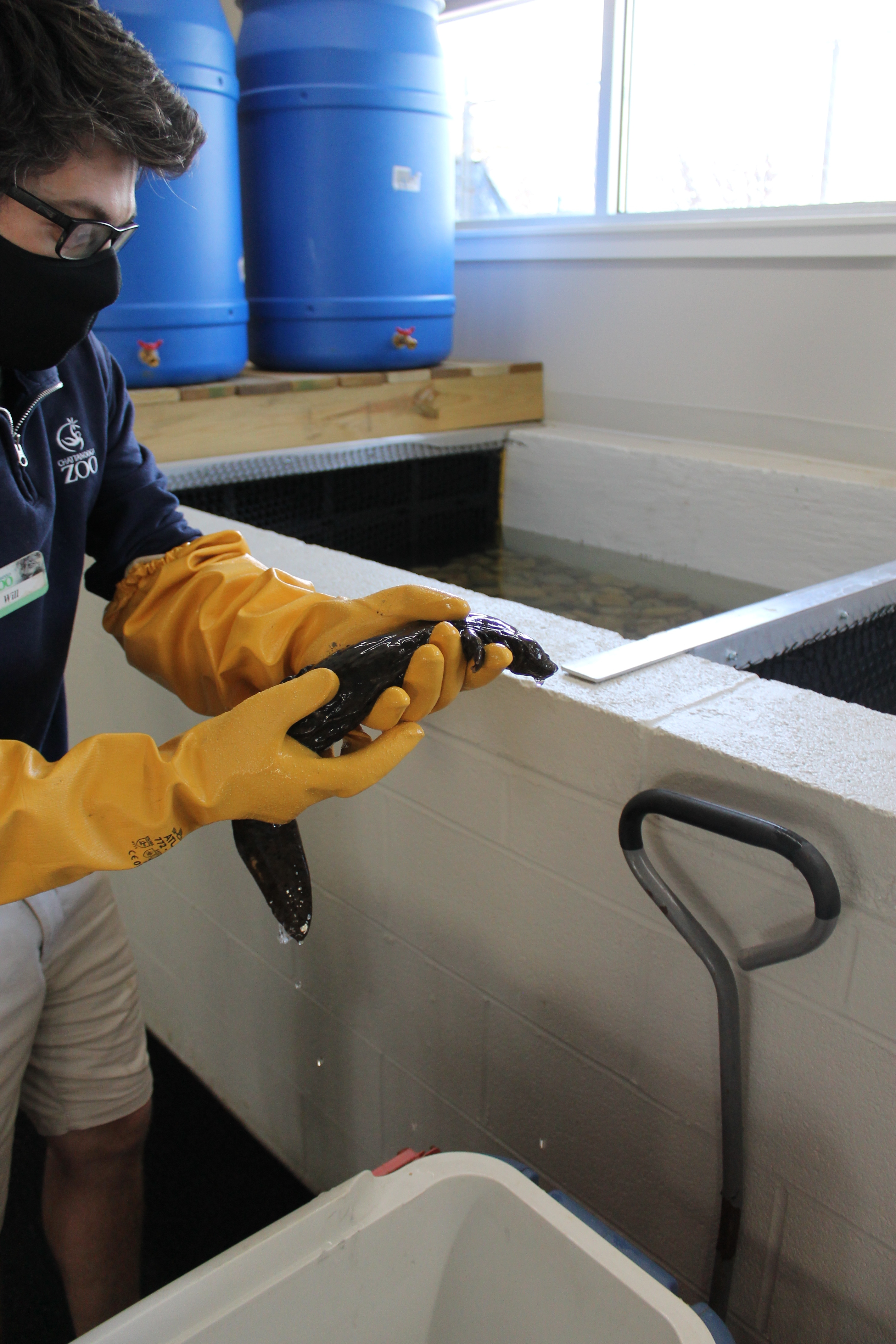Ground puppy. Snot otter. Lasagna lizard.
While nicknames given to the Eastern hellbender abound, wild sightings of the ancient amphibian do not.
In fact, the giant aquatic salamander is designed to stay out of sight.
Native to the cool, fast-flowing streams of the Appalachian Mountains, "hellbenders are very cryptic animals and can spend their entire lives sitting under one rock," says Will Ternes, an animal keeper at the Chattanooga Zoo.
Their skin is covered in cells specialized to detect light, known as photoreceptors, which alert the salamander if any part of it is exposed, Ternes explains.
But that isn't the only cool fact about hellbender skin.
The hellbender breathes through pores found within its numerous fleshy folds - which to some resemble lasagna, hence the nickname.
"The entire environment passes through their body," Ternes says.
That includes harmful things like pollutants and pesticides. And their preferred habitat makes them vulnerable to siltation, when particles of sand and clay caused by erosion fill the gaps beneath rocks where the hellbender lives and breeds.
According to the National Wildlife Federation, hellbender populations are rapidly declining throughout all of the species' historic range, stretching from Georgia to New York - making it more elusive than ever.
But now, the Chattanooga Zoo has found a way to offer rare up-close viewings of the hellbender.
Last April, the zoo opened its newly constructed Hiwassee Hellbender Research and Education Facility to the public. The building features a classroom, research space and two enclosures mimicking the animal's natural habitat - one for smaller, younger individuals, and the other for larger, older ones.
The exhibits can be viewed seven days a week from outside the facility through its large window, though, Ternes admits, the animals can be difficult to spot.
"As with any zoo animal," he says, "you're looking for a balance (in its surroundings) so that it's visible but not stressed out."
But every Saturday and Sunday, from 9 a.m. to noon, guests are invited behind the scenes while Ternes feeds the larger hellbenders.
"That's the prime opportunity to see them in action. We're feeding them nightcrawlers, shrimp and thawed mice, and they're really moving around. Seeing the [hellbender] face-to-face is such a surprise," Ternes says. "People are getting their minds blown."
And he is, too.
Ternes says one of his favorite traits of the hellbender is the way it feeds. Similar to sharks, hellbenders are able to detect minute movements and vibrations in the water.
"You drop a worm in and they detect it," he says.
In response, the hellbender puffs up its cheeks, creating a negative pressure in its mouth. When opened, this causes water - and anything around it - to rush in.
"They open their mouths and literally inhale the food. Their bodies bounce up in the air," Ternes says. "Hellbenders really are remarkable living fossils."

